Birding Guide Birding Guide
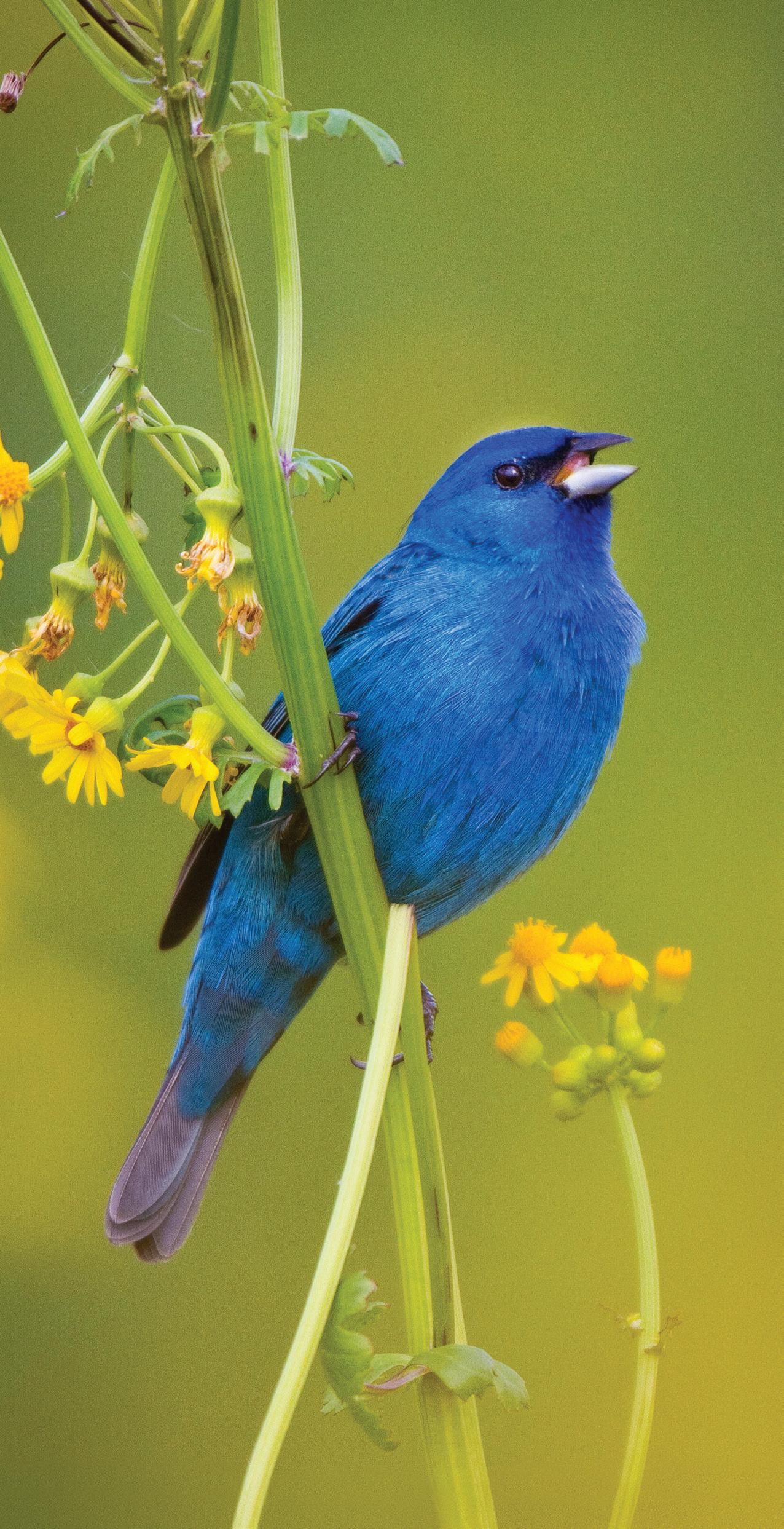
Explore Jackson County—one of the most biodiverse birding spots in the Southern Appalachians. From creekside trails to mountain peaks, discover a rich variety of habitats and species across accessible public lands.



Explore Jackson County—one of the most biodiverse birding spots in the Southern Appalachians. From creekside trails to mountain peaks, discover a rich variety of habitats and species across accessible public lands.


Nestled within one of the oldest mountain ranges on Earth, Jackson County contains an astounding level of biodiversity and is host to a huge variety of both migratory and resident bird species. With an elevation pro le ranging from around 2000 feet in the lower Tuckaseegee Valley to over 6000 feet on the Plo -Balsam Range, the county contains a wide range of unique and healthy bird habitats and an incredible amount of accessible public lands and parks. Visitors to our creekside trails, native meadows, high elevation balds, and mountain-top Spruce-Fir forests will nd themselves in some of the most scenic birding locations in the country and encounter some of the most adorable and awe-inspiring birds in the world. Whether you’re a casual birder thrilled to watch Great Blue Herons and Bald Eagles hunt along the river, or a avid enthusiast, scouring the laurel thickets for elusive warblers to add to your life-list, Jackson County has plenty of birds to put a joyful smile on any visitor’s face.
Ideally located near Great Smoky Mountains National Park and the Blue Ridge Parkway, Jackson County, NC is home to the mountain towns of Cashiers, Cherokee, Dillsboro, Sylva, and more. Here, you’ll experience More Peak Moments— extraordinary adventures that stay with you. Cast a line on the WNC Fly Fishing Trail®, hike one of 185 named peaks, visit NC’s only Certi ed Forest Therapy trail, or witness elk at dawn. Marvel at Whitewater Falls, the tallest east of the Mississippi. From authentic Cherokee and Appalachian culture to acclaimed farm-to-table cuisine, Jackson County o ers unforge able experiences that rise above the ordinary— moments of awe, connection, and wonder you’ll carry long a er you leave.

A free app by Cornell Lab that helps identify birds by photo or sound and provides photos, maps, and bird data.
A global bird-tracking app and database where users can log sightings, with Jackson County-speci c bar charts available.
On the cover: Indigo Bunting
(2000 TO 3000 FEET )

Visitors to Jackson County need not travel far from town to nd great birding sites. Year-round this quiet creekside park nestled between Sylva and Dillsboro is home to an amazing diversity of birds and wildlife including Northern Flickers, Eastern Phoebes, House Finches, Eastern Bluebirds, White-breasted Nuthatches, Field Sparrows and Carolina Wrens. With several acres of healthy rivercane, hardwoods, and edge habitats, this park also hosts a variety of migrating and breeding songbirds during the warmer months including Ruby-throated Hummingbirds, Red-eyed Vireos, and several species of Swallows. Monteith Farmstead Park is one of many convenient locations for birders with limited mobility, as this park features wheelchair accessible bathrooms, shing pier, and picnic shelter, as well as a at paved trail loop.
The Tuckaseegee River is a treasured and well-stewarded waterway running through our county, which o ers recreational opportunities for y shers, boaters, and birders alike. River Access parks at Shook Cove, East Laporte, Cullowhee, Locust Creek, Webster, Dillsboro, and Whi ier each o er birders great viewing locations for river-loving birdspecies including Great Blue Herons, Bald Eagles, Belted King shers, Common Mergansers, and Osprey. Birders should pay particular a ention to the areas under bridges and overpasses where colonies of Barn and Cli Swallows build remarkable mud nests a ached to the concrete beams. These birds along with Tree and Northern Rough-winged Swallows, which are also found along the river here, are endlessly entertaining to watch as they swoop and dive to hunt insects.
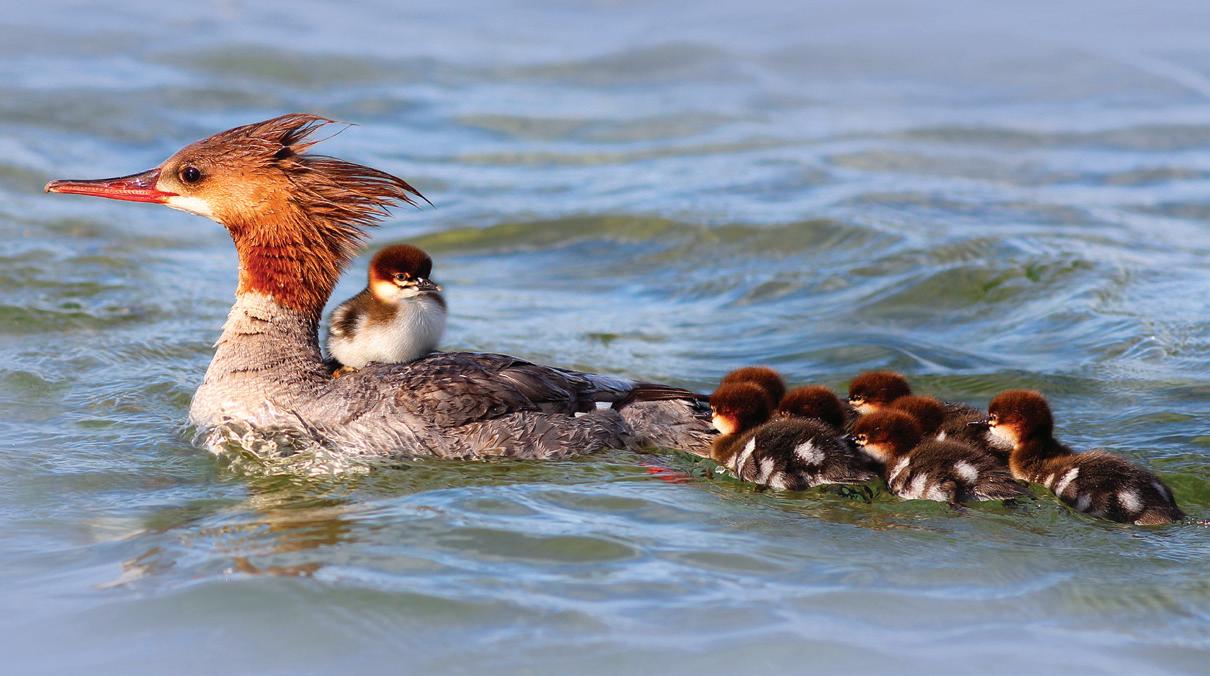
Another great place to watch birds on the Tuckaseegee River is along the Jackson County Greenway. With ADA accessible one mile out-and-back trail, parking, and restrooms, the Greenway o ers birders of all abilities and mobility needs beautiful views of the river. The paved trail meanders through mixed hardwood forests and small clearings o ering great habitat for riparian zone species such as Great Blue Herons, and Belted King shers as well as forest species Northern Parulas, Yellow-throated, Black & White, and Hooded Warblers, Hermit and Wood Thrushes, and Indigo Buntings. While you’re here, be sure to keep an eye out for River O ers and American Beavers which make their homes along the river as well.

Come for the archeology and stay for the birds! Judaculla Rock is a soapstone petroglyph and quarry site dating back to the Archaic and Woodland periods. Connected with Tsul’Kalu or “Judaculla,” the slant-eyed giant master of game of Cherokee legend, the site retains special significance to the Cherokee people who have been stewards to these lands for thousands of years. A visit to this location provides not only a chance to awe at human ingenuity and artistry, but also ample birding opportunities in the forests, pastures, and meadows along the road. These rich edge-zone habitats are host to a huge variety of birds including Indigo Buntings, Scarlet Tanagers, Brown-headed Cowbirds, Tree Swallows, Sparrows, Bluebirds, Brown Thrashers, Blue-gray Gnatcatchers, Woodpeckers, and several species of Warblers. While some adjacent meadow areas are open to the public, visitors are reminded to read signage and respect private property as marked.

Tucked between the softball and intramural fields for Western Carolina University, this unassuming little park and surrounding fields host a surprising variety of unique species for this area including Eastern Meadowlarks, Red-winged Blackbirds, Killdeeer, and several species of Sparrows including Song, Savannah, Chipping, Field, White-throated, and occasional White-crowned and Vesper. From the small picnic shelter parking lot birders can explore along the edge of Cullowhee Creek, cross a wooden foot bridge to encounter grass-loving species near the intramural fields, or access the

WCU Hiking and Mountain Bike trail system via an underpass tunnel under Hwy 107. The hiking trail system, which can also be accessed from Little Savannah Rd, includes many great vantage points for spotting summer breeding woodland species such as Black-throated Green and Worm-eating Warblers, Ovenbirds, Wood-Thrushes, and occasionally Yellow-breasted Chats.
Oconaluftee Valley is the southern gateway to the Great Smoky Mountains National Park which neighbors Cherokee, North Carolina, and the Qualla Boundary. The beautiful visitor center has ADA accessible parking restrooms and educational exhibits. Mixed surface trails meander through fields and a historic homestead, offering great opportunities to view the park’s resident Elk herd as well as a wide diversity of bird species including Wild Turkey, Red-winged Blackbirds, Barn, Tree, and Northern Rough-winged Swallows, and Indigo Buntings. From the Visitor’s Center birders may continue along the 3 mile round-trip forested Oconaluftee River Trail, where Belted Kingfishers, Great Blue Herons, Yellow Throated Warblers, Northern Parulas, and Louisiana Waterthrushes can often be found.
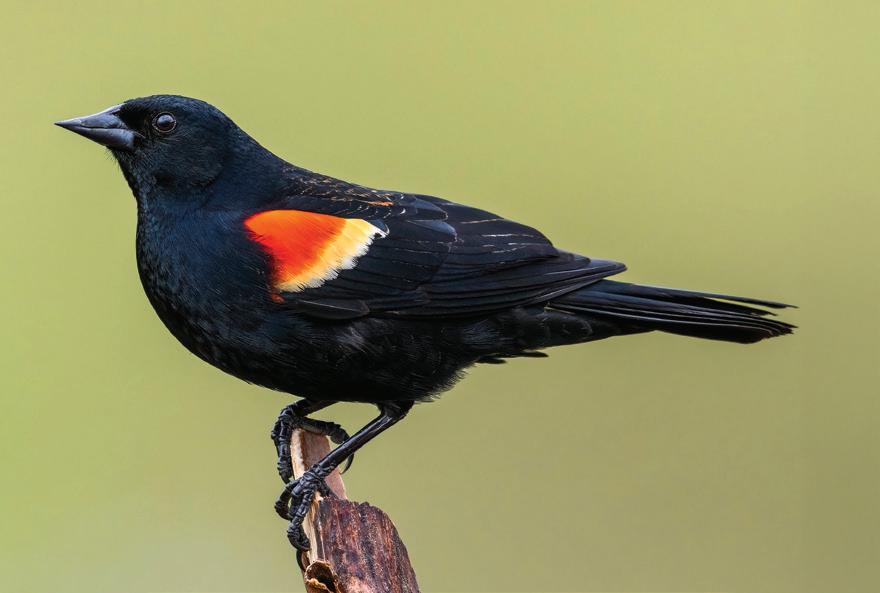
(3000 TO 4500 FEET )
High Falls Trail guides visitors to one of the most impressive waterfalls the area complete with a sun-filled granite amphitheater, ample swimming opportunities, and of course, great birding! While the steep but well-maintained 2 mile out & back access trail from Thorpe Lake can be challenging for some, the views of the river and the abundant bird-life along the trail make this an excellent location for birders looking for
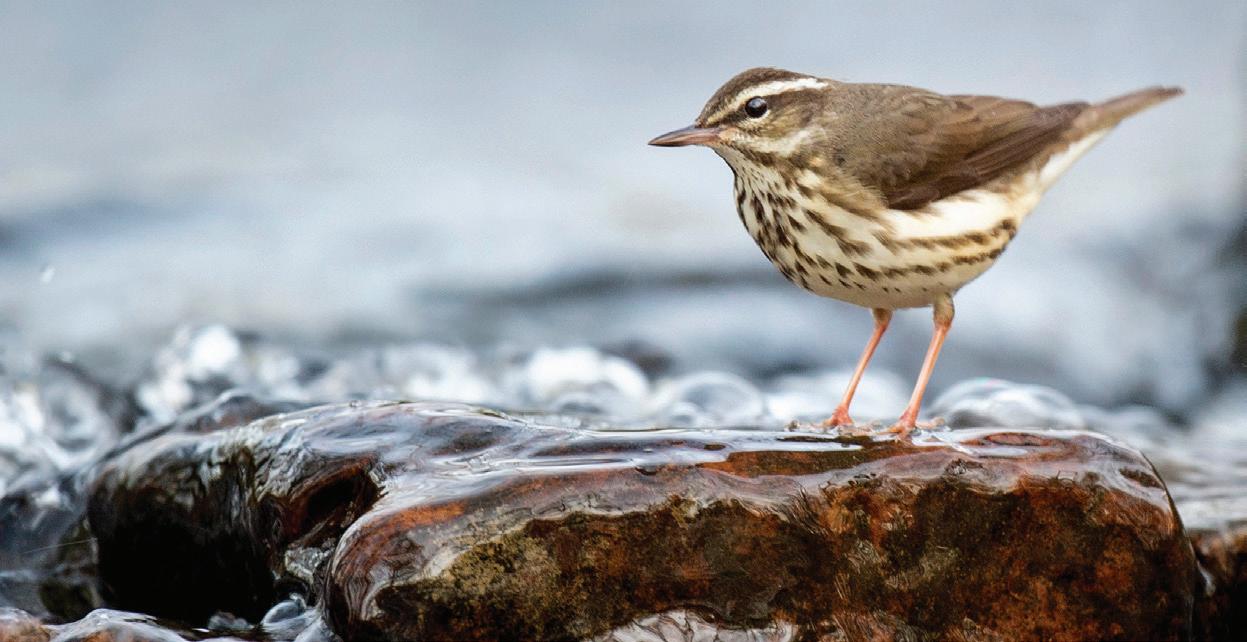
a bit of adventure. For those who prefer a longer but gentler approach, an alternative 3.8 mile out & back trail originating on Shoal Creek Mountain Road meanders through the forests, along the river, and also provides the opportunity to view Rough Run Falls 0.3 miles downstream of High Falls. Both of these trails are excellent habitat for resident forestspecies such as Yellow-bellied Sapsuckers, White-breasted Nuthatches, and Golden-crowned Kinglets, and the rocky gorge itself provides one of the best local spots for seeing Belted Kingfishers, Louisiana Waterthrushes, and other riparian zone species.
The Village Green is a 13.2 acre park located in the heart of Cashiers at the crossroads of Highway 64 and Highway 107. The site features trails and boardwalks that meander through several distinct habitats including a wetlands, native wildflower garden, and hardwood tree-lined fields. Despite its relatively small size and proximity to a town, this park boasts one of the highest bird species counts of anywhere in Jackson County. In the warmer months visitors may get the chance
to see White-eyed Vireos, Common Yellowthroats, Northern House Wrens, and Blue-gray Gnatcatchers. The varied landscapes here continue to provide habitat to birds through the colder months as well, making this one of the best winter birding locations in the area. Winter residents here include Swamp Sparrow, Rubycrowned Kinglets and Cedar Waxwings. Although not completely accessible to those in wheelchairs, the park allows for those with limited mobility and mixed mobility room to explore this serene location on it’s firm gravel trails and wooden boardwalks.
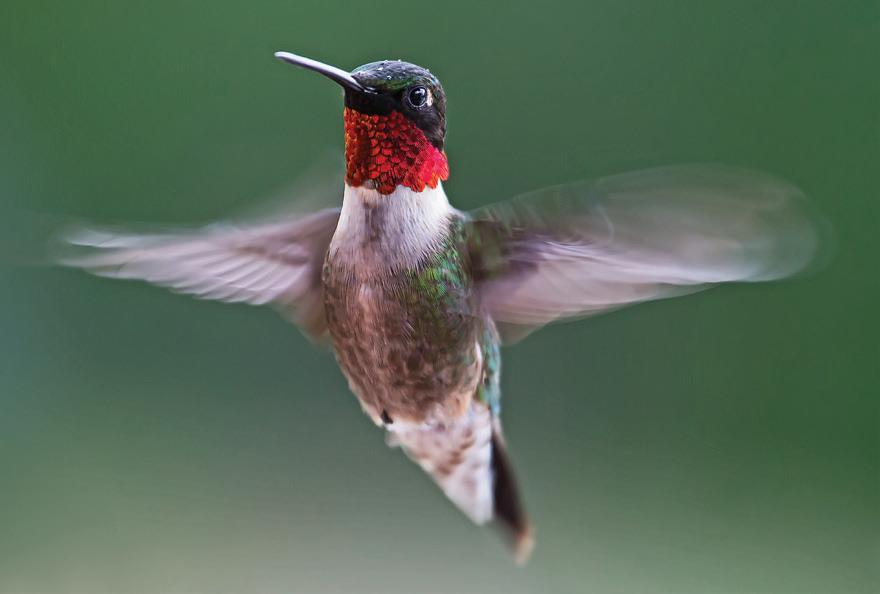
Often referred to as the “Yosemite of the East”, Panthertown is a beautiful high elevation valley surrounded by rock cliffs and criss-crossed by pristine creeks and waterfalls. Popular access points include Salt Rock Gap Trailhead near Glenville, NC and Cold Mountain Gap Trailhead near Toxaway, NC. In addition to a nearly endless variety of hiking and mountain biking trails which are lovingly maintained by local non-profit Friends of Panthertown, birds and wildlife are also abundant throughout the valley including Ruffed Grouse, Wood Thrushes, Acadian Flycatchers, American Redstarts, and Worm-eating and Black-throated Blue Warblers. To ensure your safety, visitors to Panthertown are encouraged to always carry a map and view waterfalls only from below.
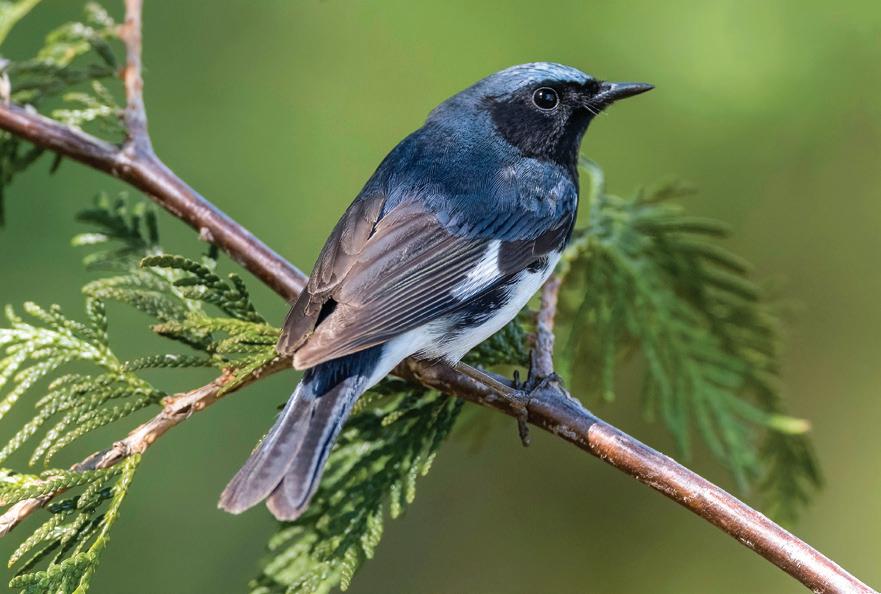
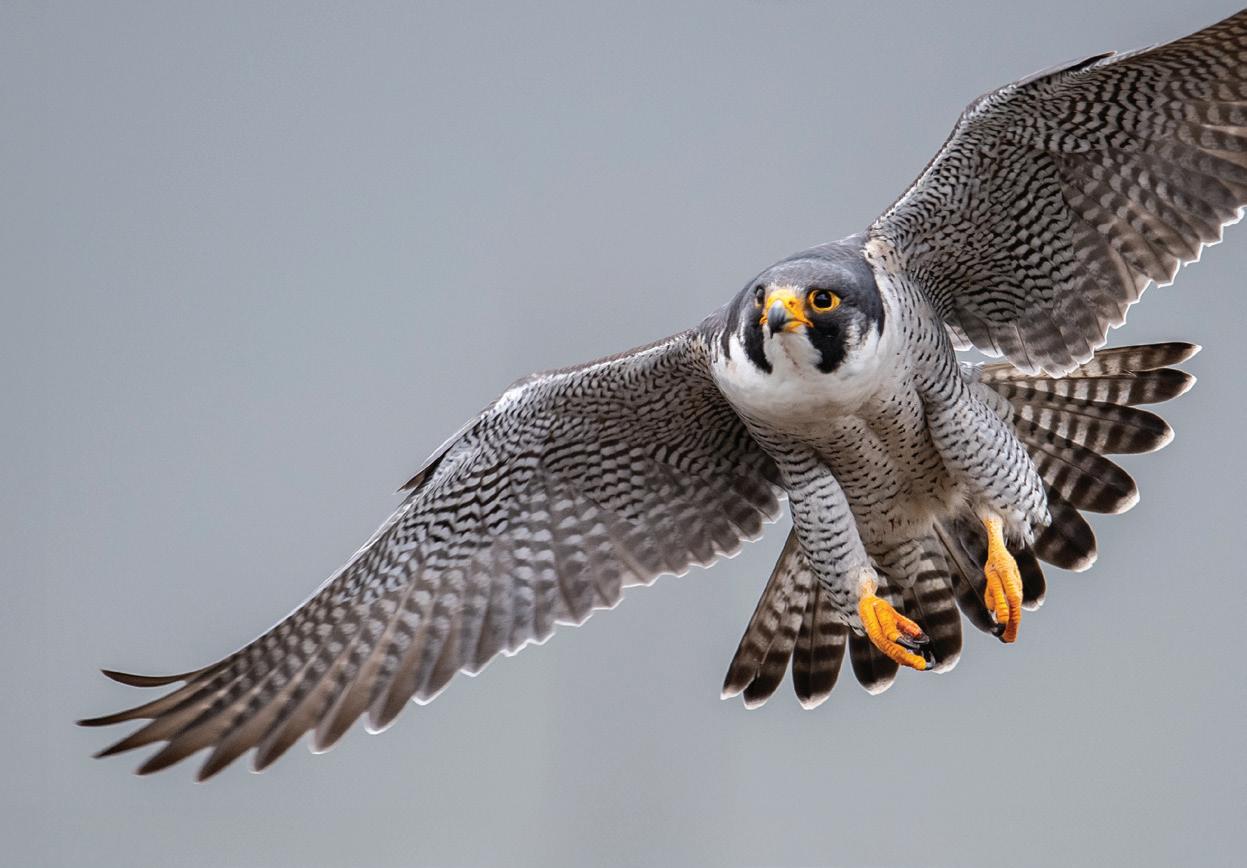
Whiteside Mountain is one of Jackson County’s most recognizable peaks and most popular hiking destinations. The 2-mile loop trail which climbs above sheer 750-feet high cliffs and offers panoramic views of the valley below also is one of the county’s premier birding sites. Peregrine Falcons which nest on the cliff faces during spring and summer can often be seen from one of the trails’ many cliff-top view points. Broad-winged Hawks can also be viewed from this vantage during fall as they migrate, often forming “kettles” of very large numbers! Throughout the year, these awe-inspiring vista points provide opportunities to watch other large birds soaring gracefully or acrobatically on the warm columns of air adjacent to the rock face. These include Black and Turkey Vultures, American Crows, and Common Ravens. Woodland species found along the trail here include Black-throated Blue Warblers, Ovenbirds, Red-breasted Nuthatches, and Blueheaded Vireos.
No birding trip to Western North Carolina would be complete without a drive along the scenic Blue Ridge Parkway. From the Balsam Gap Entrance at 3400 ft visitors can either travel south towards Cherokee or north towards Asheville. Either way, the parkway provides dozens of awe-inspiring viewpoints and convenient picnic areas all of which are unique and excellent for encountering birds such as Brown Creepers, Rose-breasted
Grosbeaks, and Warblers including Canada, Blackburnian, and Chestnut-sided. Once reaching higher elevations, birders are treated with several more unique habitats including SpruceFir-covered peaks such as Waterrock Knob (milepost 451) and Richland Balsam (milepost 431). These mountaintops are Pleistocene relicts of the boreal forests which once covered the entire landscape during the last Ice Age and which continue to harbor cool-temperature-dependant bird species rarely found elsewhere at this latitude. Red Crossbills, Winter Wrens, Golden-crowned Kinglets, and Veerys are among the birds often found at these high-elevation overlooks and trails along with occasional Northern Saw-whet Owls. A few miles past Richland Balsam at mile 422, birders can often catch a glimpse of the Peregrine Falcons which nest upon the rocky crags of Devil’s Courthouse.

• Pinnacle Park (Large forested park near Sylva NC with miles of hiking trails, waterfalls, and abundant wildflowers)
• Ralph Andrews Park (Seasonally open public lakeside park & campground in Glenville NC with hilly paved road loops and restrooms)
• Jackson County Recreation Center Complex and Trails (Public park in Cullowhee NC with ADA Accessible parking, flat paved trails, restroom, large indoor recreation complex, and aquatic center)
• Balsam Lake Recreation Area (Small lake and wooded trail system within Nantahala National Forest)
• Jackson County Marsh (Viewing opportunities along Ferguson Rd; Parking available at Tractor Supply near Sylva; Please Respect Private Property)
www.facebook.com/groups/tuckbirders
One of the best ways to experience birding in a new location is by connecting with a local bird club. Birders of the Tuckaseegee Watershed (“Tuck Birders” for short) o ers freeto-a end events throughout the year in Jackson County and aims to cultivate stewardship and community connection in a fun and welcoming environment.
www.bmtrust.org/birdfest
WNC BirdFest is a free annual festival held in early May in Dillsboro, NC, celebrating World Migratory Bird Day. Hosted by Balsam Mountain Trust and partners, it o ers guided bird walks, live music, local art, kids’ activities, educational talks, eco-friendly vendors, and a free ra e—promoting bird conservation and outdoor fun for all ages.
www.wildremembering.com/guide
Local guide Topher Stephens o ers private birding tours tailored to your goals. A Jackson County native and professional naturalist, he brings decades of experience exploring local peaks, waterfalls, and birding hotspots. Specializing in bird ID, birding by ear, and wildlife ecology, Topher is also the author of this guide.
The Carolina Bird Club is a nonpro t supporting birders across the Carolinas. Its mission is to promote bird enjoyment, study, and conservation while connecting birders through shared knowledge and experience. The club o ers helpful online resources, publications, and biannual meetings that provide great opportunities to learn and build community.
The North Carolina Birding Trail is a resource designed to link birders and nature-based tourists with great birding sites across the state and the local communities in which they are found. The website features an excellent interactive map including several sites within Jackson County as well as a blog and other educational resources.

In the spring, as the days get warmer and ephemeral wildflowers begin to emerge, Jackson County experiences one of the great miracles of nature: bird migration! As neotropical bird species follow the eruption of caterpillars and other food sources northward across the landscape, birders in Jackson County are treated to an amazing abundance of feathered visitors. Using radar technology, researchers estimate that over thirty five million birds migrate across our county every year! In addition to those birds who settle in for the summer breeding season, spring is also the best time to spot those species who pass through this region on their way to more northern latitudes. During this season, avid birders (or those who are just plain lucky) may see Spotted and Solitary Sandpipers, Palm, Bay-breasted, Prairie, Cape May, and Blackpoll Warblers, Vesper Sparrows, and Common Nighthawks among many others. Due to the tree-canopy still being largely open during early spring, this season is also the best time to get good looks at high canopy forest birds which tend to be more obscured by foliage later in the year.
Summer in the Southern Appalachians is a birders’ dream. In the valleys, early summer is a great time to spot our breeding resident birds such as Scarlet Tanagers, Blue Grosbeaks, and Cliff Swallows along with their recently fledged babies. With a fully-leafed canopy, summer can be a bit more challenging to spot forest birds but offers a great impetus to practice birding by ear and really enjoy the symphony of birdsongs that fill our fields and forests.

In the warm evenings, after dark, you might even hear the song of Eastern Whip-poor-wills and Screech Owls resonating out from the wooded hillsides. Once the temperatures in towns rise into the 80s and 90s, it’s a great time to hike into the shady hardwood coves of Panthertown, descend into the rocky gorges of High Falls, or drive up to the high elevation mountaintops along the Blue Ridge Parkway to cool off. At these higher elevations, the breeding season comes a bit later, allowing summer birders opportunities to bask in the ethereal soundscapes of Veery and Winter Wren songs along the mossy Spruce Fir mountaintops.

Autumn is one of the most popular times to visit our mountains, and with blazing bright foliage painted across the mountains, there’s no mystery what attracts tourists during this gorgeous season. September and October also happen to be some of the best times for birding here in Southern Appalachia. With breeding season behind
them, migratory birds begin to make their way southward and many make pit-stops along the way here in Jackson County. Chimney Swift colonies can be seen flocking over downtown Sylva and the woods are full of Tennessee, Cape May, and Magnolia Warblers. Swainson’s Thrushes are often seen and heard during this season as well along with occasional Philadelphia Vireos and Licoln’s Sparrows. The cool temperatures also welcome back our winter resident species to the valleys such as Cedar Waxwings, Swamp and Whitethroated Sparrows, Hermit-thrushes, Yellow-rumped Warblers along with occasional Buffleheads, and Hooded Mergansers on lakes and ponds.
Due to our wide spectrum of habitats and elevation profiles, Jackson County can be a great destination for birding even in the winter. During these colder months, birders will find the most success at low and medium elevation sites such

as Monteith Farmstead Park, Oconaluftee Visitors Center, WCU Picnic Shelter, and Cashiers Village Green. At these sites hardy birders may findl find rear-round resident species in abundance such as Northern Cardinals, Carolina Wrens, White-breasted Nuthatches, and Red-bellied Woodpeckers. This is also a great time for spotting migratory species who overwinter in our valleys such as Yellow-bellied Sapsuckers, Ruby-crowned Kinglets, Hermit Thrushes, Purple Finches, Yellow-rumped Warblers, and Cedar Waxwings. The best part about birding in the winter is that there are no leaves to obscure views, making birds easier to spot!
With bird populations in major decline across the continent, it is more important than ever to engage in mindful and ecologically conscious practices when enjoying birds.
• Always stay on designated trails and respect private property. Many bird habitats contain sensitive plant and animal species which can be damaged by off-trail travel. Local conservationists work hard to keep sites accessible to the public so be a good ambassador to our neighbors by respecting their private property and ensure that these sites remain open and accessible.
• Follow Leave No Trace® Principles. Always park vehicles on durable surfaces. Pack out all trash from trails and parks and minimize your impact on the landscape. Plan ahead to keep yourself and others safe.
• Never harass or disturb birds especially near their nesting areas. Getting too close to nests can scare parents away, leaving chicks hungry or enabling predators to take eggs or young. Refrain from using audio-playback or “pishing” as these can confuse and deplete migratory birds’ precious energy stores during their limited breeding windows.
• Work to protect birds at home by planting natives, avoiding pesticides, keeping cats indoors, turning lights out at night, and preventing window strikes by using bird-safe window film. Please also consider donating to bird conservation groups.
Jackson County welcomes birders of all abilities and offers several accessible birding sites, including Waterrock Knob, the Jackson County Greenway, Recreation Complex in Cullowhee, the Village Green, Oconaluftee Visitor Center, and Monteith Park. Accessibility may vary. Learn more at our Accessible Attractions page or visit Birdability for broader resources.
This guide was authored by Topher Stephens, a local birding guide, leader of the Birders of the Tuckaseegee Watershed club, co-organizer of WNC BirdFest, and founder of local nature school Wild Remembering. Contact him and find out more at www.wildremembering.com